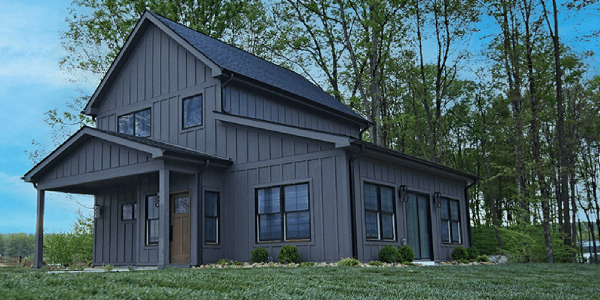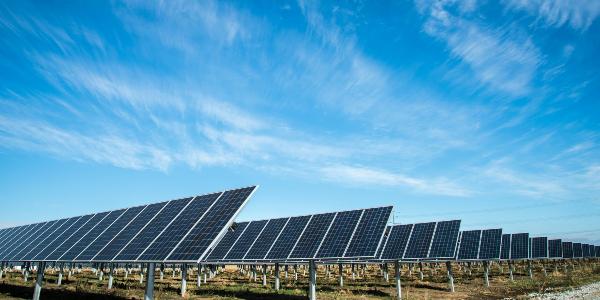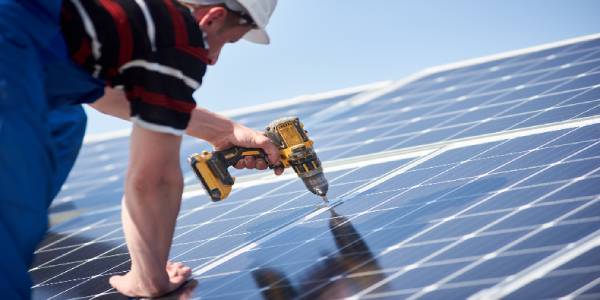Unveiling myths about solar panels and roof coatings

By Progressive Materials.
Solar panels continue to play a role in providing energy needs across the nation. Contrary to popular belief, when added to silicone roof coatings systems, energy generation and waterproofing can be maximized.
It doesn’t matter where you live, take a drive through your neighborhood or the next city over and you can see that solar panels are an increasing trend across the United States. They work by converting sunlight into electricity through the photovoltaic effect. Solar panels consist of many individual solar cells, typically made of silicon. When sunlight hits these cells, it excites the electrons in the material, causing them to flow and create an electric current. While forecasts are still uncertain, it is expected that rooftop solar panels could provide 25-50% of the world’s energy needs by 2050. At Progressive Materials (PM), we wanted to address how silicone roof coatings and rooftop solar panels can provide maximum energy efficiency and keep your building watertight for years despite the myths in the industry.
Solar panels and your roof
It makes perfect sense that an energy source that runs on the sun’s UV rays is commonly found on roofs. Most roof-mounted solar panels require mounting brackets for the panels. The brackets, or anchors, are typically screwed into the roof structure. PM’s Regional Manager for Northern California and Nevada, Curt Semple, says he hears two common myths about solar panels and silicone roof coatings:
- When used alongside solar panels, silicone isn’t a long-term solution.
- Silicone can’t seal around the anchors.
Busting the myths
Addressing the myth that silicone isn’t a long-term fix, Semple says, “Silicone, in many cases, will match and perhaps outlast the solar panels themselves.” A solar panel’s life expectancy is roughly 20-25 years. PM offers watertight warranties up to 20 years. That warranty can be elongated after its lifespan for up to 20 more years. That means that, when properly installed, PM Silicone’s won’t be an issue and can even outlast a solar panel.
Regarding the myth that silicone can’t properly seal around solar panels, Semple says, “Our technical support team can find a solution to create a watertight membrane that lasts on these solar panel installations.” Those solutions could include PM’s High Solids Silicone Roof Coating, PM’s Flashing Grade Silicone around any penetrations, and slip sheets, just to name a few. In addition to mounting brackets, contractors may use ballasted or pre-molded systems in solar panel installations. “Everybody is creating different mounts to hold up these panels,” Semple says. With many different options for anchoring solar panels, PM strives to develop numerous options for our customers.
The added benefit of white silicone
Traditional solar panels capture sunlight on one light-absorbing side. Bifacial solar panels absorb light on both sides and are more efficient than traditional panels. Bifacial systems are expected to grow at a rate of 18.71% from 2023 to 2029. PM Silicone’s reflectivity means you get even more benefits from your solar panels. Sometimes referred to as “cool roofs.” PM’s white silicone reflects up to 88% of the sun’s rays. Sunlight descending on your roof will hit the solar panels. Sunlight that hits your white silicone roof will be reflected off the roof and again into the solar panel system. That will give you added energy generation!
Conclusion
Solar panels will play an increasingly important role in energy production in the coming decades. In this blog, we have shown how PM Silicone reflectivity can boost solar panels’ power generation and how our strong warranty program means you can rest easily with a watertight area around solar panels’ anchors. We think it’s a win-win that PM Silicone and rooftop solar projects can work hand in hand to create new energy sources and keep your building watertight for years to come.
Original article source: Progressive Materials
Learn more about Progressive Materials in their Coffee Shop Directory or visit www.ProgressiveMaterials.com.

-2025-xtv-mls-tour-2.png)





















Comments
Leave a Reply
Have an account? Login to leave a comment!
Sign In